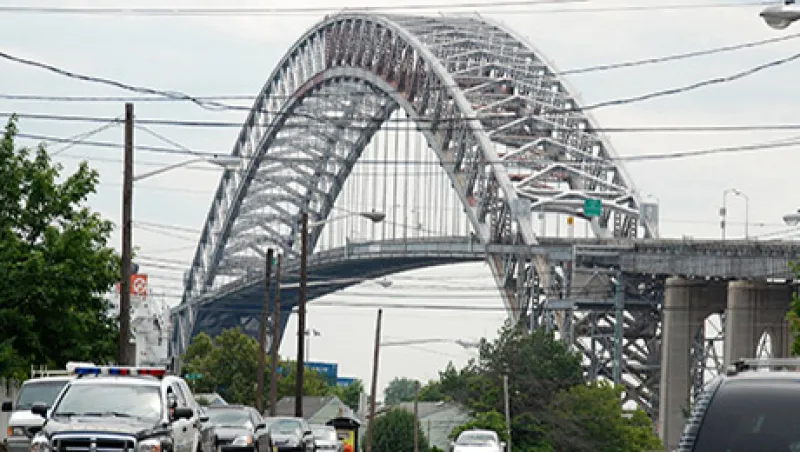Every time we turn on a faucet, walk down a sidewalk or connect to the Internet, we’re using infrastructure. Typically, it’s not something we notice or give much thought to, unless we encounter trouble: a road full of potholes, power blackouts or floods, among other potential problems. With all the trouble around us, we certainly are giving infrastructure much more thought these days.
The problem is that the U.S. has underinvested in its infrastructure for decades. Today infrastructure spending as a share of U.S. GDP is around 2.5 percent, much lower than the 3.9 percent average in peer countries such as Canada, Australia and South Korea; nearly 5 percent in Europe; and between 9 and 12 percent in China. In a July 2013 report, McKinsey Global Institute estimated that the U.S. should spend at least an additional $150 billion annually on infrastructure through 2020 to meet its needs. This level of investment would add about 1.5 percent to annual GDP and create at least 1.8 million jobs.
This is a topic that my colleagues at KKR and I recently addressed with the Brookings Institution in a white paper titled “The Way Forward: A New Way to Fund America’s Infrastructure.” As federal and state funds dry up for projects such as bridges and tunnels, we need to start thinking differently about how we can finance our changing transportation, energy, water and other infrastructure needs. Capital from the private sector can play a critical role in making sure that we keep up with these demands.
For example, take the Municipal Utilities Authority of Bayonne, New Jersey. The town, located directly north of Staten Island and west of Red Hook, Brooklyn, which is across the Upper New York Bay, is working to shift its economic base away from fishing and petroleum refining and toward technology. As part of this refocus, Bayonne’s Municipal Utilities Authority installed the first wind turbine in the New York–Northern New Jersey metropolitan area to supply power to its pumping stations in 2012, beginning a process of investing in a growing sector. That same year, the city brokered a public-private partnership (PPP) to upgrade and operate the water system, which was struggling under a $125 million debt load and historical underinvestment.
In partnership with KKR, United Water, a subsidiary of France’s Suez Environnement Co., won the competitive bid to modernize the Municipal Utilities Authority’s system, retrain and hire the utility’s staff and pay off the utility’s debt in partnership with the city. Investors got a 40-year concession, and the utility received an estimated $35 million in cost savings for the life of the contract.
The results are already starting to show. Within the first year the United Water–KKR joint venture made significant upgrades in pipes and equipment, provided more than 2,500 hours of training, bought new fleet vehicles and put in place an asset management plan. Moody’s upgraded Bayonne’s municipal bond outlook from negative to stable in part because of the investment.
Another great example of a PPP is Detroit, where the public and private sectors are pooling funds with philanthropies to revitalize the city’s downtown. More than $2 billion in private funds has been invested in Detroit’s central business district, Lafayette Park, Rivertown and Midtown between 2010 and 2012. Dan Gilbert, Detroit native and the founder and chair of Detroit–headquartered Quicken Loans, has led real estate investments, purchasing and developing 30 downtown properties, which have attracted 85 businesses to the area. Along with the foundations, which have made more than 3,500 grants worth $551 million in Detroit, the job creation from the real estate development is helping the city recover from its financial crisis and bankruptcy filing. For instance, the Kresge Foundation (see II’s story “Foundations Throw Detroit’s Art Collection a Lifeline”) is investing in a 3.3-mile light-rail system, providing transit connections across the newly redeveloped area.
The combination of these public and private projects is creating powerful change in Detroit that we believe wouldn’t be possible without the support of government. Working together, Detroit’s public, business and nonprofit sectors are generating much needed economic stimulus. We will likely need more such innovative partnerships to help debt-burdened cities and states make critical investments. Whereas the structure of these public and private arrangements will need to be customized for each deal, there is demand from institutional investors to partner with cities and states in many different sectors.
We feel that different types of infrastructure will require different types of funding structures — all of which will call for some level of public and private cooperation. As a country, we need to move beyond simplistic notions of privatization to a future of infrastructure in which arrangements are true partnerships between government agencies, private firms, investors and the public. We feel that these types of partnerships are strongest when initiated from the bottom up at the state and local level in order to make the greatest contribution to economic growth.
In many respects, we believe the U.S.’s ability to fully realize its competitive potential depends on making smart infrastructure choices. These decisions should be responsive to changing economic, demographic, fiscal and environmental factors that determine what types of infrastructure are needed. At stake is our nation’s economic future. We think a better understanding of the role of the public and private sectors, as well as the potential for partnership between them, will serve to provide the U.S. with the reliable and modern infrastructure it needs to build greater economic opportunity.
Raj Agrawal is the North American head of KKR’s infrastructure business and is a member of the infrastructure investment committee, based at the firm’s office in Menlo Park, California.
Get more on endowments and foundations.






